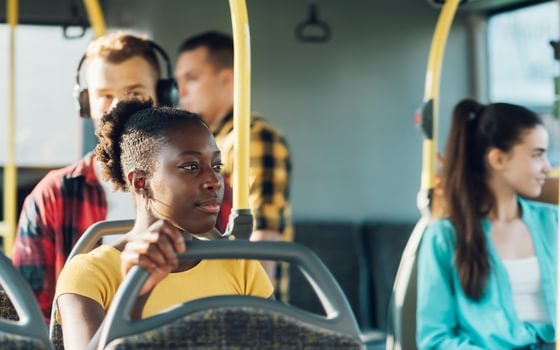Can anyone compete with Uber?
Ethical alternatives are possible, and are popping up across the world.
29 January 2018
More than 850,000 people have signed a petition launched last September to protest Uber’s licence being revoked by Transport for London. The implication is that for many, the benefits of ride-hailing apps – low prices, quick pick-up times and ease of use – are specific to Uber; that if we lose Uber we lose it all. But is the choice quite as stark as we have been led to believe? It’s time we asked whether it’s possible to create an ethical taxi app for London; one which can benefit both drivers and customers, and keep the cost of rides low, while providing fair and stable employment for drivers.
“Globally, Uber is a loss-making company but London is one of the few places where it makes money.”
Globally, Uber is a loss-making company – recording net losses of $3.3 billion from June 2016 to June 2017 – but London is one of the few places where it makes money. Its profits in London grew to £3 million in the year up to October 2017, showing that it is possible to run a profit-making ride-hail app in the city.
Today we release new polling which shows that there is consumer demand for an ethical alternative: 82% of people are ready to leave Uber for a service that offers better pay and working rights for drivers. Would it be possible build our own app that’s capable of matching Uber on both price and service?
Austin, Texas: a town without Uber
On 9th May 2016, residents of Austin, Texas woke to find that they were without the city’s two biggest ride-hailing services, Uber and Lyft. Both companies halted their services overnight following the results of a referendum upholding regulation requiring them to perform fingerprint checks on their drivers. At least 5,000 drivers were suddenly out of a job and panicked customers took to organising rides over Facebook to arrange an alternative.
“We’d never considered going into ridesharing and developing a solution prior to Uber pulling out,” Ride Austin’s CEO Andy Tryba told me. “The day after the referendum… that’s when we decided that we needed to find a solution for the city.”
Four sleepless weeks later, Ride Austin was launched. Despite a shaky start, they built a service running between 50,000 and 60,000 rides a week. “As we got more efficient, we became as thin a layer as possible,” says Tryba. Ride Austin decided to put their profits to ethical use – they were able to maintain the low costs for riders while increasing the amount going to the drivers, and raising $300,000 for local charities.
Unfortunately, this story doesn’t have a fairytale ending. A year later, Uber and Lyft returned to Austin after successfully lobbying state legislators to nullify Austin’s new ride-hail regulations. They used their huge amounts of venture capital funding to subsidise rides, undercut the competition and regain their monopoly on the market. Ride Austin remains in business 18 months later, but it’s share of the total ride-hail market has fallen from highs of 55% down to 10%.
“But this story shows that in the absence of multinational companies like Uber, local alternatives do emerge”
But this story shows that in the absence of multinational companies like Uber, local alternatives do emerge – alternatives which are capable of competing on price and pick-up time, while retaining investment within the local economy.
What happens if Uber doesn’t leave London?
Even if Uber does eventually leave London, it will still be able to operate whilst the appeal process is ongoing, which could take years. Is it possible to capture a market share in a city where Uber is still operating?
In the face of Uber’s monopoly, Parisian ride-hail app Rox is trying to overcome the challenge posed by network effects. Network effects are positive feedback loops which mean that the more people use a service, the better it gets. With ride-hail apps these network effects exist on both sides of the platform: more drivers mean faster pick-up times, thereby attracting more customers. Meanwhile more customers mean greater demand, attracting more drivers.
For co-founder Yanis Kerdjana, the network effects of ride-hailing apps are much weaker than those associated with platforms like Facebook, where the networks between people are imbued with personal meaning. “In Uber there are two categories of users, the drivers and the riders. The users have just one-to-one short interactions through the app. This doesn’t create a strong network effect, as there isn’t the potential to form a lasting bond that you want to keep,” says Kerdjana. “The problem is not building a network – it is building the community.” An app which users feel works for them, providing a fairer deal for drivers and customers is one way of challenging Uber’s hold on the market – and this is what Rox is attempting to do.
Austin and Paris show that it’s possible to build an alternative to Uber that works for drivers and customers, while benefiting the local economy. At NEF, we’re bringing together trade unionists, tech partners and passengers to build something better than Uber: a cooperatively-owned alternative that is just as convenient and price-competitive, but which treats its passengers and drivers with respect.
Campaigns We can do better than Uber
Topics Technology Transport






